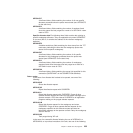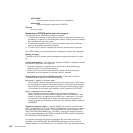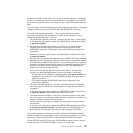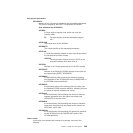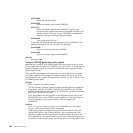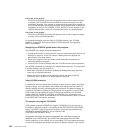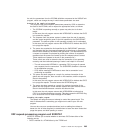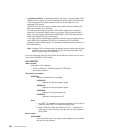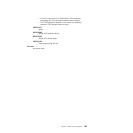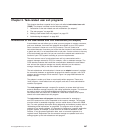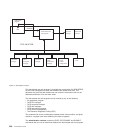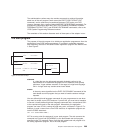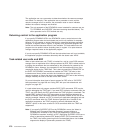the exit, the parameters from the IPCONN definition are passed to the XISQUE exit
program, which can change the way in which these parameters are used.
Overview of the sample exit program
The program uses the exit-specific parameters passed by CICS to determine
the state of the IPCONN, and to request the appropriate action, as follows:
1. The IPCONN is operating normally; a queue may exist, but is of short
length.
In this case, the exit program returns with UERCAQUE to indicate that CICS
is to queue the request.
2. The response from the partner system is slower than the rate of requests,
and the queue length has grown to the limit specified on the QUEUELIMIT
parameter. The partner system is still operating normally, but is overloaded.
In this case, the exit program returns with UERCAPUR to indicate that CICS
is to purge the request.
3. The queue has reached the limit specified by the QUEUELIMIT parameter,
and requests that join the queue are expected to take longer to be satisfied
than the time defined by the MAXQTIME parameter. (The estimated time for
a request to complete is calculated by dividing the number of successful
requests since the queue first formed by the time elapsed since it formed.
These statistics are passed to the exit in the parameter list.)
These criteria are used to determine that the connection is not operating
correctly, and that continued queuing of tasks is not helpful. In this case:
v The exit returns with UERCAKLL, requesting CICS to purge all queued
user requests from the connection. The SYSIDERR condition is returned
to the application program.
v CICS issues message DFHZCaaaa to warn that a connection is not
performing as expected.
4. The queue has been purged as a result of a previous invocation of the
global user exit program, there are still no free sessions, and the request is
about to be queued.
In this case, the exit program returns with UERCAPUR to indicate that CICS
is to purge the request. This also leaves the UEPRC8 flag set.
5. The queue has been purged as a result of a previous invocation of the
global user exit program. A new allocate request has been received and is
about to be allocated because a session has become free.
In this case, the exit program returns with UERCNORM to indicate that
CICS is to continue processing normally. This also causes the UEPRC8 flag
to be unset and CICS to issue message DFHZCbbbb.
Extending the sample program
The sample exit program does not attempt to control the queue length. This
kind of enhancement is something you might want to add to your own exit
program.
You can also use more complex decisions (such as adding time delays to
lessen the risk of false diagnosis) to decide when to issue the return codes that
purge the queue, and allow queuing to restart.
XRF request-processing program exit XXRSTAT
XXRSTAT enables you to decide whether to terminate CICS when either of the
following occurs:
v CICS is notified of a VTAM failure by the TPEND exit.
Chapter 1. Global user exit programs 263



